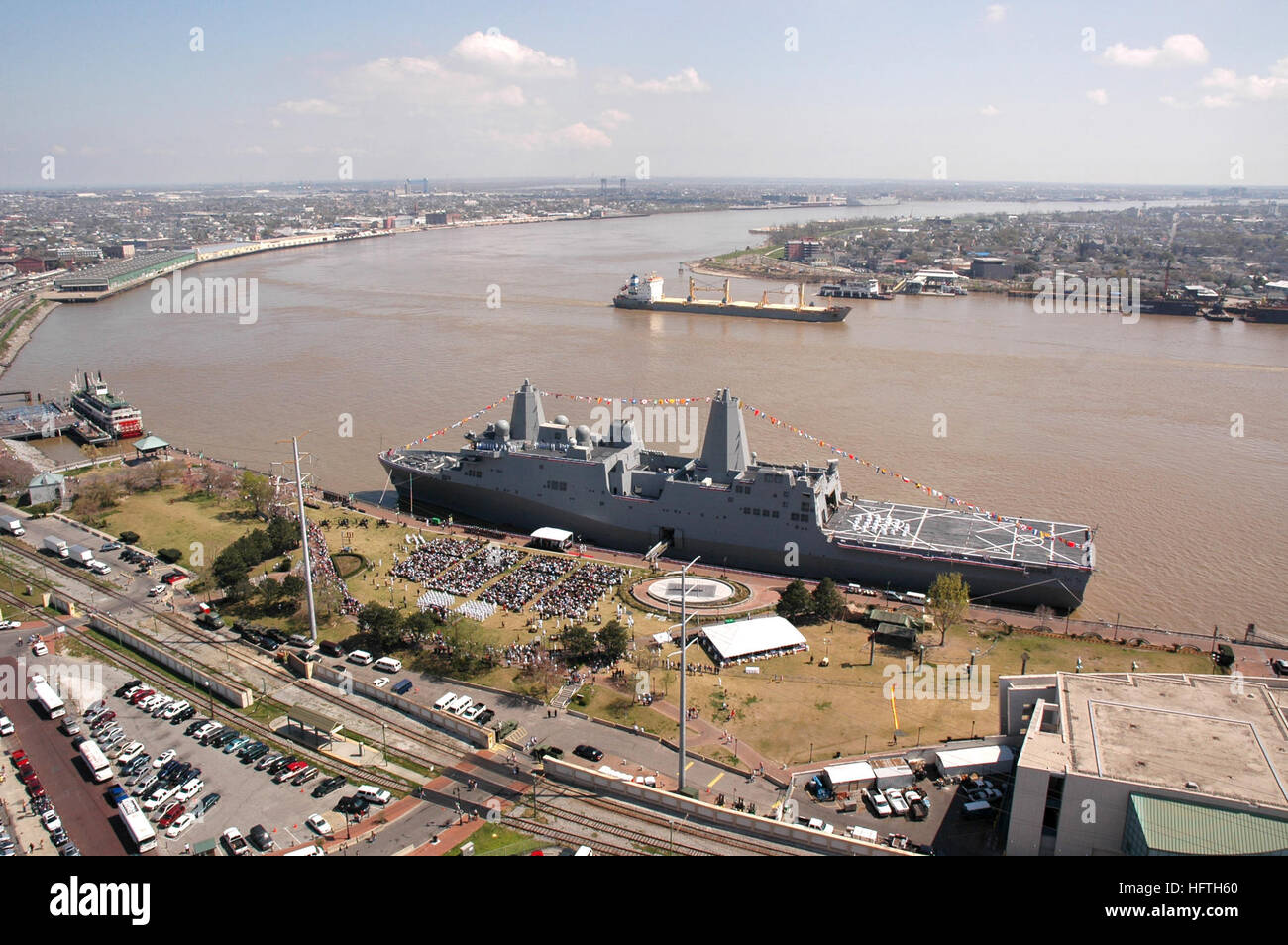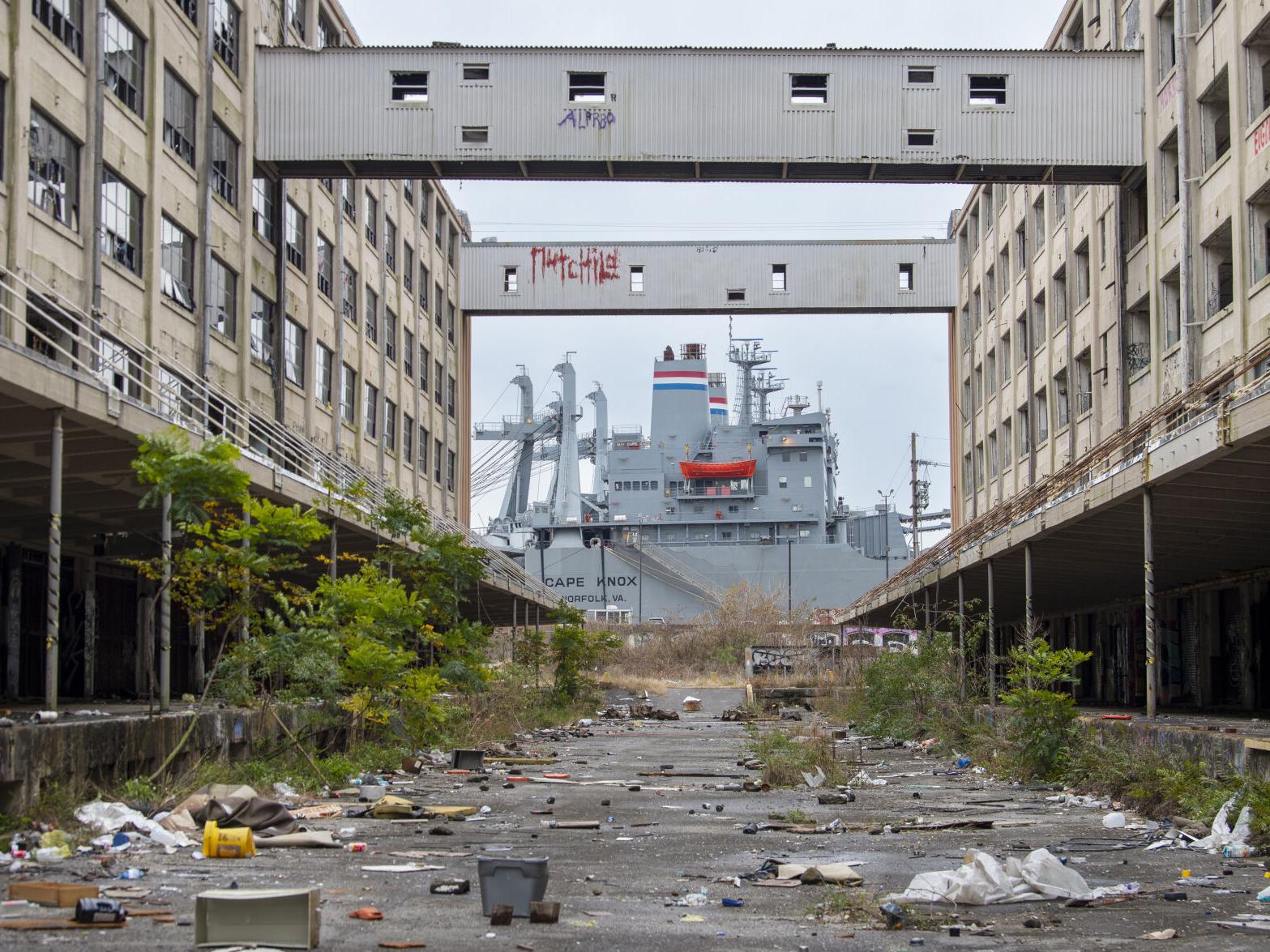Navy Ships New Orleans - USS New Orleans (LPH-11) is an Iwo Jima-class amphibious assault ship of the United States Navy. She was her third naval vessel to bear this name and the first at the Battle of New Orleans, the last major naval battle of the War of 1812.
New Orleans was laid down on 1 March 1966 at the Philadelphia Naval Shipyard in Philadelphia, Pennsylvania. She was started on February 3, 1968, by Arthur A. de la Fussaie. He was appointed her November 16, 1968.
Navy Ships New Orleans

New Orleans first appeared in the Western Pacific in August 1969 as the flagship of Amphibious Readiness Group Her Bravo. His embedded Marine Corps helicopter squadron and battalion lead team were ready to land within hours.In October, he hosted the 8th Annual Vietnam Awards. Later that month he took part in Operation Keystone Cardinal, a retreat of Marines from South Vietnam. Her first deployment of the ship ended in March 1970. New Orleans participated in five amphibious exercises, conducted Amphibious Ready Group (ARG) exercises in the South China Sea, and visited ports such as Hong Kong, Manila, Subic Bay, Okinawa, and Taipei before heading to San Diego. I'm back.
Nola Navy Week
Prior to her next deployment to the Western Pacific, New Orleans was given two other interesting assignments for her. In August 1970, he became Commander of the 1st Fleet and Richard He supported President Nixon's visit to Puerto, Mexico, in Vallarta, and made a port call at Acapulco. In the late 1970s, preparations were made for the Apollo 14 recovery. On February 9, 1971, about 900 miles (1,450 km) south of American Samoa, astronauts Alan Shepard, Stuart He Russa, and Edgar Mitchell greeted him.
In May 1971, New Orleans made her second sortie in the Western Pacific, conducting various exercises, multinational cruise exercises in combat conditions, mock convoy attacks, and mock Marines off Mindoro Island, Republic of the Philippines. attacked. She completed her deployment in November of the same year.
After a fairly long shipbuilding period, New Orleans commenced her next deployment to the Western Pacific on 17 July 1972. She became the flagship of the 3rd Amphibious Squadron and later became the flagship of Amphibious Ready Group Alpha. From late July to her early August, New Orleans and her military unit participated in flood relief operations in the Philippines, earning the Philippine Presidential Commendation.
The helicopter carrier engaged in contingency operations with Reddy Group off the coast of Vietnam until early February 1973, when she became the flagship of Commander TF 78 and the control ship for Operation d Her Sweep. Her CTF 78, commanded by Maj. Gen. Brian McCauley, was tasked with mine clearance operations along the North Vietnamese coast and harbors. On 17 April 1973, she ceased operations in Haiphong port.
File:us Navy 090801 N 0327s 005 The Amphibious Transport Dock Ship Uss New Orleans (lpd 18) Returns To Homeport From A Scheduled Deployment.jpg
New Orleans then participated in mission recovery operations for Skylab 3 (28 September 1973) and Skylab 4 (8 February 1974). She also attempted the rescue of astronauts Thomas Stafford, Deek her Slayton, and Vance her brand during her Soyuz mission on the July 24, 1975 U.S.-Soviet joint Apollo.
The USS New Orleans is underway with her CH-53 Sea Stallion and her CH-46 Sea Knight her helicopters fully loaded on her flight deck.
In 1980, the ship was deployed during the Iranian hostage crisis and she spent several months in the Indian Ocean. In 1981 she completed an overhaul of the Puget She Sound Naval Shipyard. 1982 and her 1983 deployments and exercises included RIMPAC '82, Exercise Kernel Usher '83-1, Operation Team Spirit 83, and her WESTPAC '83. From May 1984 until December she sailed in the Indian and Western Pacific Oceans, taking part in eight major amphibious operations. These included Operation Beach Guard, Operation Cobra She's Gold, and Operation Valiant She's Usher, as the first American ship to land troops on Iwo Jima after World War II, and Incheon, South Korea after the Korean War. landed troops on While with his WESTPAC in 1986, he was on patrol off the coast of the Philippines during the Philippine national elections. She also served as a medical and communications support vessel during President Ronald Reagan's visit to Bali, Indonesia.

After returning to her home port, New Orleans participated in her two major exercises, making her 13th deployment to the Western Pacific. During this time she participated in four of her amphibious exercises including Cobra Gold '88, Valiant Usher '89 -1 and Valiant Blitz '89 -1. Her ship was in port in Perth, Australia during the Australian Biennial. In 1989, she visited the ports of Mazatlan, Mexico and Seattle, Washington for the Seattle Sea Her Fair. She also provided humanitarian assistance in Cabo San Lucas, Mexico.
The U.s.n.s. Comfort Is Now Taking Covid 19 Patients. Here's What To Expect.
After completing a phased refurbishment in January 1990, New Orleans served from December 1, 1990 to August 28, 1991 for operations Desert Storm, Desert Saber, and Desert Shield. sailed the Western Pacific, Indian Ocean and Persian Gulf for served as a member. CTG-36/CTF-156 is the largest amphibious task force in her 25 years from the West Coast of the United States. Notable achievements included the landing of her 1,700-man naval combat force on G-Day and countering anti-aircraft mines in the northern Persian Gulf within nautical miles (19 km) of the Kuwaiti coast.
In November 1991, New Orleans returned to San Diego for her six-month overhaul. In October 1992, she hosted the festivities at her Fleet Week '92 in San Francisco. After returning to San Diego, she became her first LPH to receive Afloat Training Group Pacific's 'Tailored Ship's Training Availability' and was instrumental in developing a training track for LPH-class ships. In September 1993, New Orleans deployed to her fifth WESTPAC cruise, Valiant, where she participated in Exercise Usher '93, an amphibious readiness team conducting operations in Mogadishu, Somalia, in support of the restoration of hope. was a member of New Orleans, Arthur K. From October 1993 she to November Kebrowski. Other units in this force included USS America, USS Simpson, USS Cayuga (LST-1186), and USS Dovar (LPD 9). ), USS Comstock (LSD 45), 13th Marine Expeditionary Force.
New Orleans was awarded the Armed Forces Expeditionary Medal and the Distinguished Unit Medal for her operations in Somalia from October 18, 1993 to her February 1, 1994.[3]
American astronaut Jim Lovell, director Ron Howard, and actors Tom Hanks, Kevin Bacon and Bill Paxton film part of the Oscar-winning film Apollo 13, November 1994 New Orleans hit the big screen when it came to. The 11th featured her one of her sister ships, her decommissioned USS Iwo Jima.
File:us Navy 110204 N Zc343 517 Uss New Orleans (lpd 18) Departs Dry Dock To Return To Naval Base San Diego.jpg
In June 1995, New Orleans resumed her WESTPAC operations. She was a strong supporter of the Marines' raid on the Al Hamra facility on October 24, 2004. She returned to San Diego on 22 December 1995 after departing the 198 Sea Scout as part of the Tiger Cruise, the final leg of her voyage from Pearl Harbor to San Diego. She sailed again on 31 January 1997 for her WESTPAC cruise. This included her 31st MEU (SOC) from Okinawa, Japan, and took part in Operation Tandem Her Thrust '97 in Townsville, Australia, surviving Cyclone Her Justin. before she sailed back to port on May 2nd.
New Orleans was decommissioned and she was placed in reserve at San Diego, California in October 1997. He has been awarded the Navy Command, four Combat Effectiveness Awards, the Distinguished Unit Medal, the Naval Expeditionary Medal, and the Armed Forces Expeditionary Medal. South West Asia Campaign Medal, Vietnam Service Medal, Kuwait Liberation Medal.
From 1997 to 2006 he was located at 38°4'37.86"N, 122°5'24.66"W in Susan Bay, California.
In 2006, her ship was moved to Pearl Harbor in preparation for "SINKEX". She was listed on her list of scrapped New Orleans in February 2008 instead of being sunk.
A Strategic Assessment Of The Future Of U.s. Navy Ship Maintenance: Challenges And Opportunities
However, as of June 2010, New Orleans was scheduled to sink again. Finally, New Orleans she sank on July 10, 2010 during her RIMPAC 2010 exercise. She said the ship initially suffered direct hits from at least a few Harpoon missiles. After the Harpoon attack, her B-52s of the 2nd and 5th Bombardment Wings dropped her five of her 2,000-pound GBU-10 precision bombs. As the ship began to list, coalition forces from her five participating nations - the United States, Japan, Australia, Canada and France - attacked the ship, most of which crashed above the waterline.
This article requires additional citations for verification. Please help improve this article by adding citations to reliable sources. Non-original material can be challenged and removed. Find a source: "USS New Orleans" LPH-11 – New Newspapers Books Scholar JSTOR (May 2009) (this template Learn how and how to delete her messages) Multiple issues in this article there is. Please help improve it or discuss these issues on the discussion page. (Learn how and how to remove these template messages)
This article contains a list of general references, but not enough relevant internal citations. Please help us improve this article by providing more accurate citations. (December 2016) (Learn how and how to remove this template message)
This article requires additional citations for verification. Help us improve this article by adding credible citations
Amphibious Transport Dock Lpd
New russian navy ships, new us navy ships, new canadian navy ships, new irish navy ships, new orleans cruise ships, new navy ships canada, new zealand navy ships, australian navy new ships, chinese navy new ships, new navy ships, royal navy new ships, new orleans ships
0 Comments